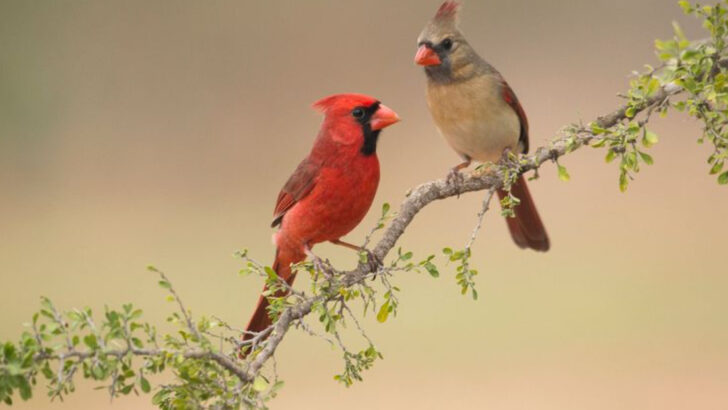Some birds sing. These ones perform.
Across backyards, forests, and open skies, America is home to winged vocalists that can out-sing any alarm clock and turn a morning walk into a private concert. From sweet whistles to pitch-perfect mimicry, these feathered divas know how to make an impression—and they’re not shy about it.
You’ve probably heard a few without knowing their names. Others might be hiding in plain sight, singing their hearts out while you sip your coffee.
Whether you’re a lifelong birder or just someone who loves the sound of birdsong drifting through the trees, these are the songbirds that truly stand out. Some are tiny, some are flashy, and a few are surprisingly loud for their size—but they all have one thing in common:
They bring music to the wild.
American Robin

Every spring, the American Robin heralds the season’s arrival with its cheerful song and vibrant orange breast. Often seen tugging at worms in the garden, this bird is a symbol of renewal and hope.
Its song, a melodious mix of cheer ups and tut tuts, is familiar to many as the soundtrack of spring mornings. Interestingly, the American Robin is not just a harbinger of spring in the East but is a year-round resident in many parts of the West.
Its adaptability and widespread presence make it a beloved figure across North America.
Eastern Bluebird

The Eastern Bluebird, with its sky-blue plumage and warm red chest, is a true gem among songbirds. Its gentle, warbling song adds a soothing backdrop to open fields and gardens.
These birds are cavity nesters, often relying on old woodpecker holes or man-made nest boxes to raise their young. Conservation efforts with nest box trails have greatly helped their population.
Did you know? The Eastern Bluebird was once on the decline but has made a triumphant comeback, thanks to dedicated conservationists. It’s a testament to human impact and positive change.
Song Sparrow

The Song Sparrow is a master of melody, known for its varied and complex songs that differ from region to region. This small, brown-streaked bird often surprises with its powerful voice.
Each male has a unique song, and its ability to mimic other birds adds to its charm. While it may appear drab, a closer look reveals intricate plumage.
This sparrow’s adaptability to different habitats, from marshes to suburbs, ensures its presence throughout North America, making it a common yet special sight. Its song is a testament to nature’s diversity.
American Goldfinch
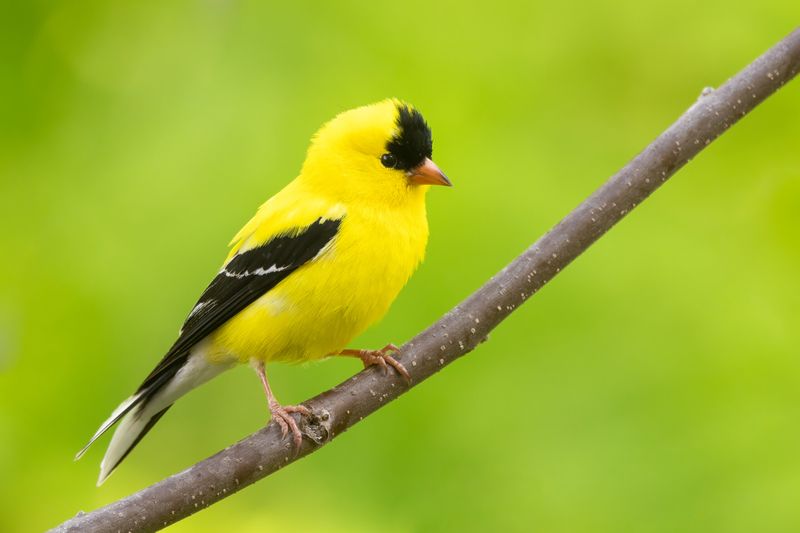
The American Goldfinch, with its sunflower-yellow plumage, is a lively presence in meadows and gardens. Known for its undulating flight pattern and cheerful song, it’s often seen flitting among wildflowers.
Unlike many birds, goldfinches molt twice a year, showcasing bright plumage in spring and summer. They are strict vegetarians, feeding primarily on seeds, which influences their late breeding season.
Their delightful appearance and song bring joy to those who spot them, embodying the spirit of summer. Look for them in flocks, adding a splash of color to any landscape.
Northern Cardinal

With its bold red feathers and distinctive crest, the Northern Cardinal is a striking sight in any garden. Known for its clear, melodic whistle, this bird is a favorite among birdwatchers. The male’s vibrant hue is not just for show—it plays a crucial role in attracting a mate.
The female, although more subdued in color, shares the male’s song, a rare trait among songbirds. Did you know? The Northern Cardinal is the state bird of seven U.S. states, making it truly iconic in American culture.
Its presence in the backyard is often seen as a symbol of joy and vitality.
Baltimore Oriole
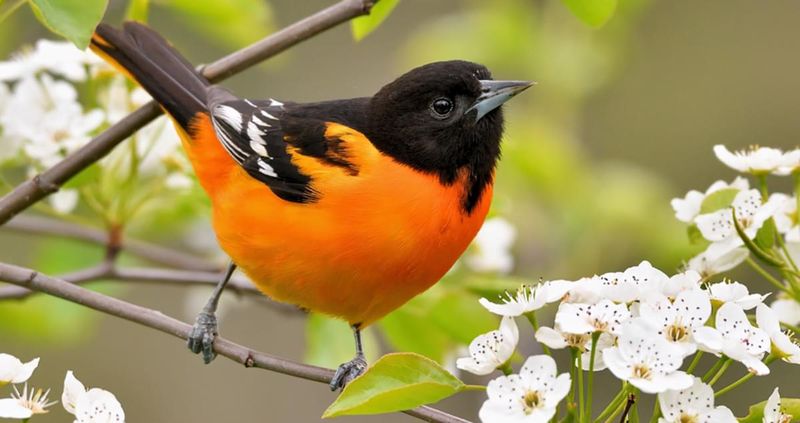
With its striking orange and black plumage, the Baltimore Oriole is a jewel among songbirds. Known for its flutelike song, it often nests in high tree canopies, weaving intricate hanging nests.
Attracting these birds to your garden is as simple as setting out orange halves or grape jelly. Orioles are migratory, arriving in the U.S. in spring from Central America.
Their presence is a seasonal delight, offering both visual and auditory beauty. Did you know? The Baltimore Oriole is the state bird of Maryland, reflecting its prominence in American wildlife.
House Finch
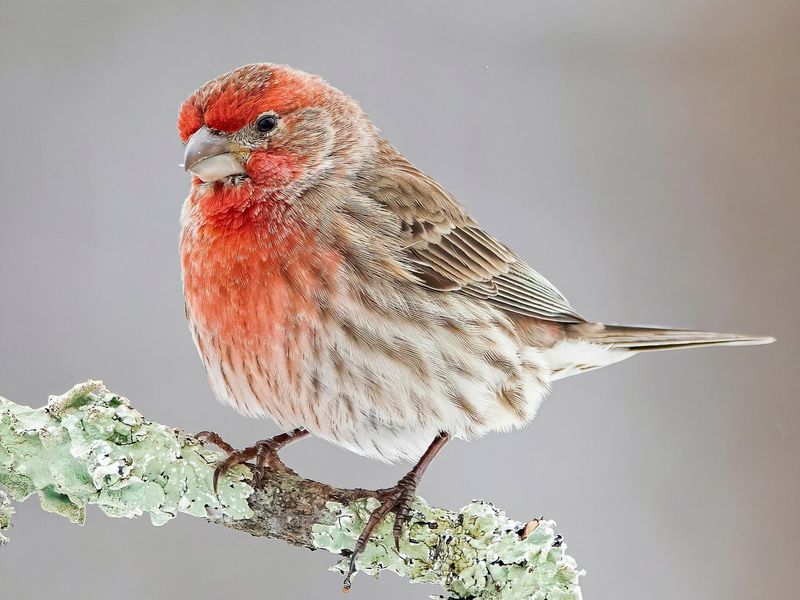
The House Finch, with its cheerful song and sociable nature, is a favorite in urban areas. Males boast a rosy red head and chest, a result of their diet, which influences their color intensity.
These adaptable birds are often seen in flocks, visiting feeders and gardens, making them accessible to many bird enthusiasts. Originally native to the western U.S., they have successfully expanded their range across the continent.
Their pleasant, warbling song and amiable presence make them a charming addition to any neighborhood.
Wood Thrush
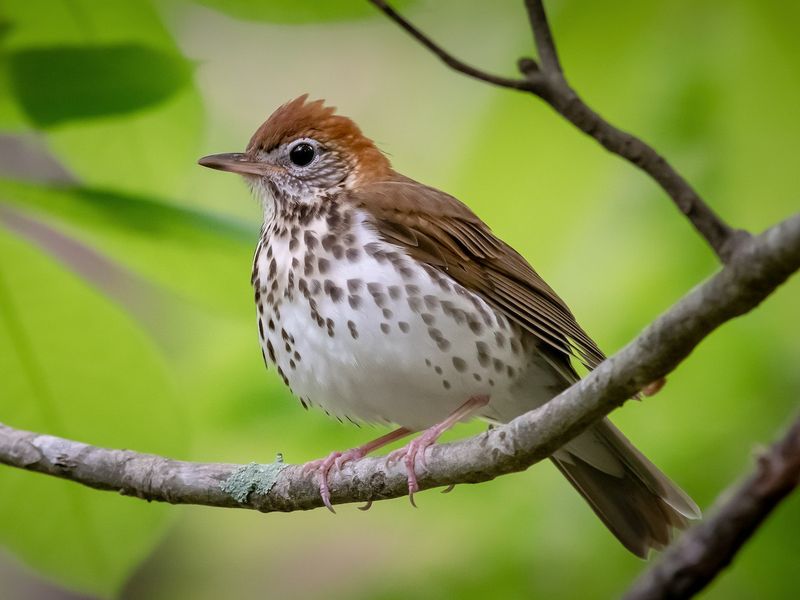
Renowned for its ethereal song, the Wood Thrush is a forest dweller with a hauntingly beautiful voice. Its flute-like melodies echo through wooded areas, enchanting all who hear them.
With a spotted breast and reddish-brown plumage, its subtle beauty complements its vocal prowess. The Wood Thrush’s song is complex, featuring harmonies that few other birds can replicate.
Deforestation poses a threat to this enchanting songbird, highlighting the need for conservation efforts. Its presence is a reminder of the delicate balance in nature’s symphony.
Indigo Bunting
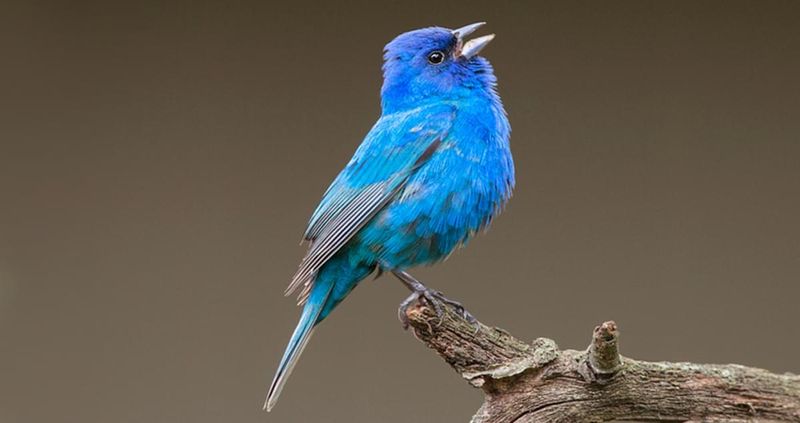
The Indigo Bunting, with its brilliant blue plumage, is a dazzling presence in fields and edges of woodlands. Males sing a lively song from high perches, marking their territory with music.
These birds migrate at night, using the stars to navigate their long journeys. Their vibrant color is a result of light diffraction, as their feathers are actually black.
Spotting an Indigo Bunting is like finding a sapphire in nature’s crown, a true spectacle for bird lovers.
Black-capped Chickadee
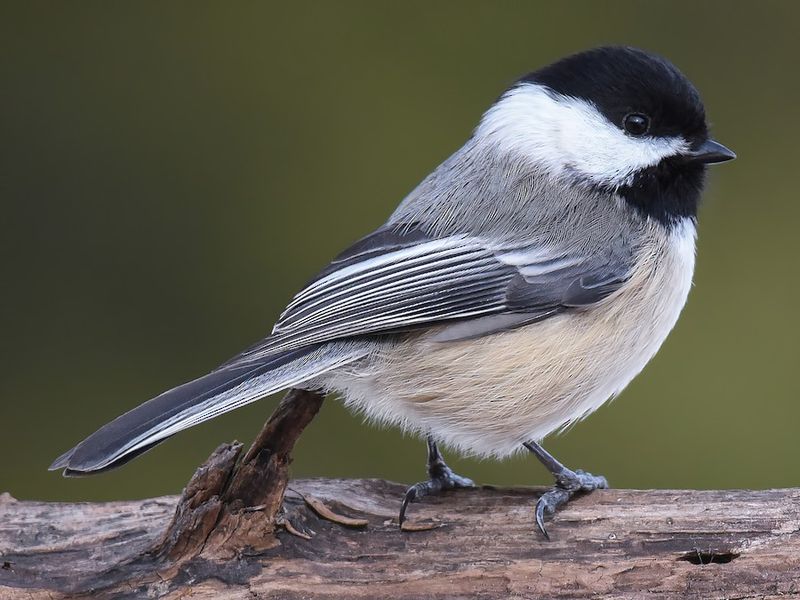
The Black-capped Chickadee, with its curious and friendly demeanor, is a beloved visitor to many bird feeders. Recognizable by its black cap and bib, this small bird is known for its distinctive “chick-a-dee-dee-dee” call.
They are social creatures, often seen in flocks, especially in winter, when they forage together. Chickadees are also known for their impressive memory, remembering hundreds of hiding spots for their food.
Their lively presence and cheerful calls bring warmth to even the coldest winter days.
Red-eyed Vireo

The Red-eyed Vireo is often heard before seen, thanks to its persistent, repetitive song that seems to narrate the forest. With olive-green plumage and a striking red eye, it blends well with the canopy.
These birds are tireless singers, often foraging for insects while maintaining a continuous stream of song. They play a vital role in controlling insect populations in forests.
The Red-eyed Vireo’s presence is a reminder of the hidden wonders in woodland areas, where keen listeners are rewarded with its avian aria.
Brown Thrasher
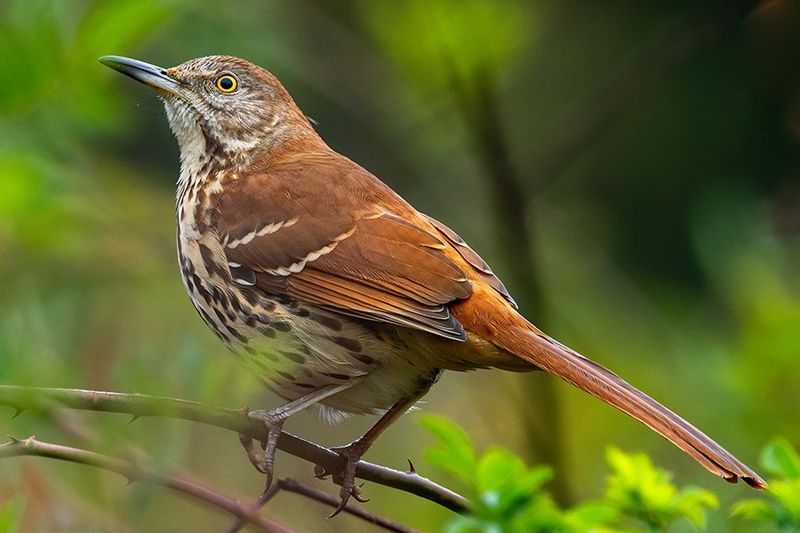
The Brown Thrasher is a master mimic, known for its extensive repertoire of songs, which can include over 1,000 song types. With rufous upperparts and streaked underparts, it often remains hidden in dense shrubbery.
These birds are excellent at foraging on the ground, using their curved bills to uncover insects and seeds. Their varied song is a complex mix of phrases, sometimes mimicking other birds and sounds.
A true virtuoso, the Brown Thrasher’s vocal abilities make it a standout in the world of songbirds.
Cedar Waxwing
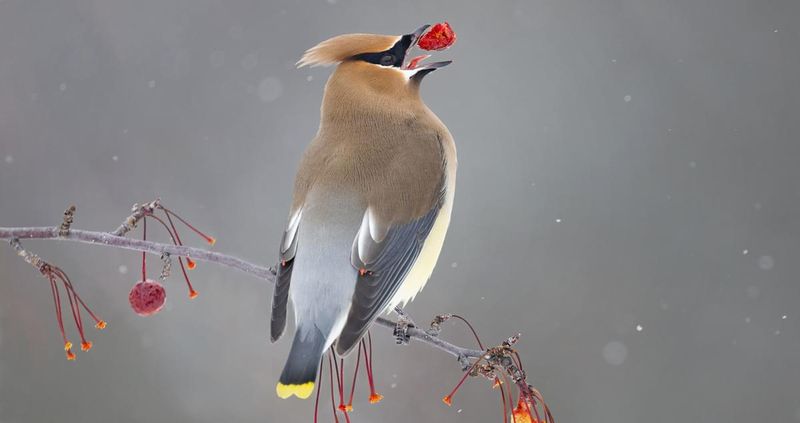
Elegant and sociable, the Cedar Waxwing is often seen in flocks, swooping through orchards and berry bushes. With sleek, silky plumage and a distinctive black mask, these birds are a sight to behold.
They are named for the waxy red tips on their wing feathers, a unique feature among birds. Cedar Waxwings have a sweet, high-pitched call that complements their gentle appearance.
Often associated with winter and fall, these birds are nomadic, following fruiting trees and shrubs for sustenance.
Tufted Titmouse
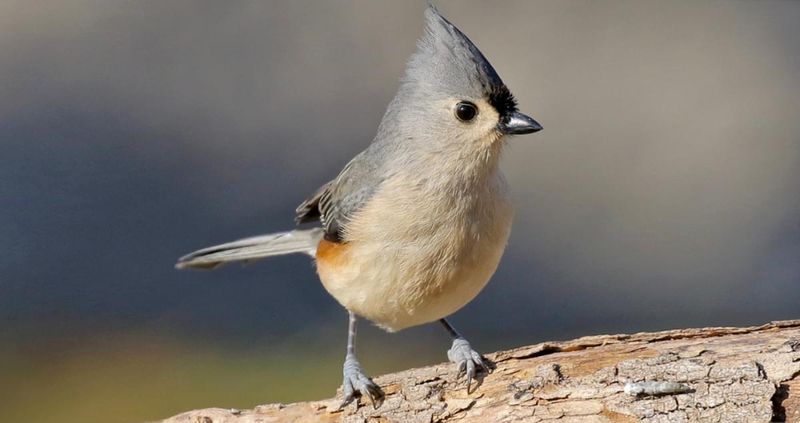
The Tufted Titmouse, with its distinctive gray crest and large black eyes, is a charming visitor to many backyards. Known for its quick movements and inquisitive nature, this bird often travels with chickadees and nuthatches.
Its call, a whistled “peter-peter-peter,” is a familiar sound in deciduous forests. These birds are known to take sunflower seeds from feeders, holding them with their feet while pecking them open.
Their lively antics and bold personality make them a favorite among birdwatchers and casual observers alike.
Northern Mockingbird
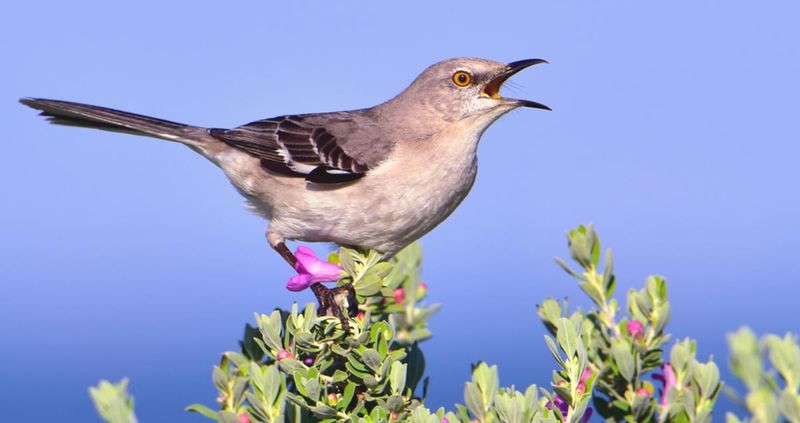
Famed for its ability to mimic other birds and sounds, the Northern Mockingbird is a virtuoso of the avian world. Its gray plumage may seem unassuming, but its vocal abilities are anything but.
This bird can learn and replicate up to 200 different songs, including car alarms and doorbells. Found in a variety of habitats, from suburban areas to rural fields, it is a common yet extraordinary presence.
The Northern Mockingbird’s song is a testament to nature’s creativity, providing a soundtrack that reflects its diverse environment.
Carolina Wren
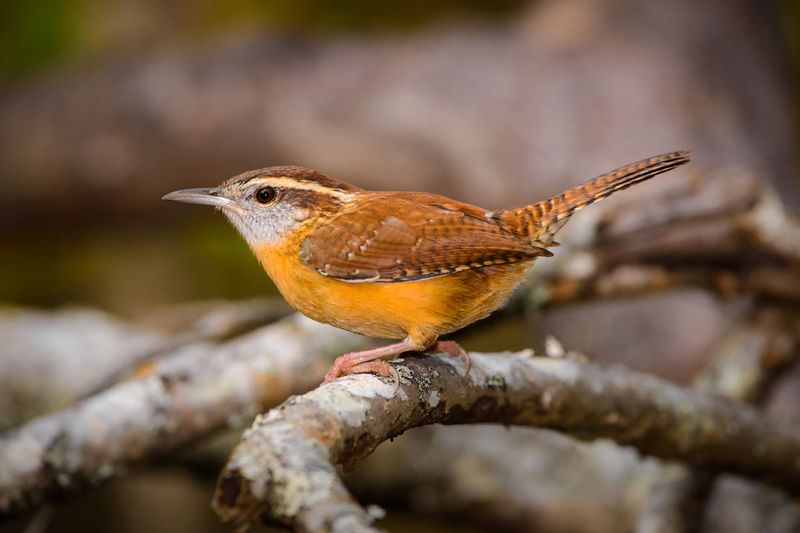
The Carolina Wren, with its vibrant reddish-brown plumage and loud, ringing song, is a dynamic little bird. Its call, a series of teakettle-like notes, is often heard echoing through gardens and woodlands.
These birds are known for their curious nature, often seen exploring nooks and crannies in search of insects. Despite their small size, they have a commanding presence, both visually and audibly.
Their adaptability to human-altered environments has made them a successful and cherished part of the avian community.
Western Tanager
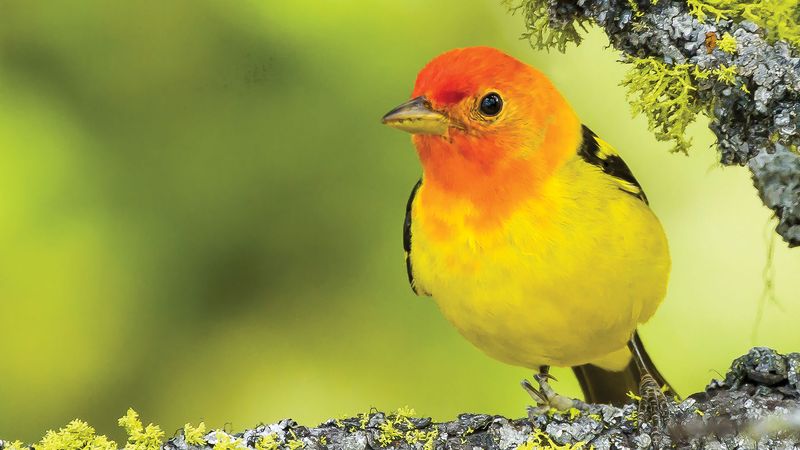
The Western Tanager, with its vibrant yellow body and fiery red head, is a stunning sight in the coniferous forests of the West. Although its song is not as remarkable as its plumage, its beauty more than compensates.
These birds feed on insects and fruits, often found high in the forest canopy. Their striking appearance is a result of their diet and pigment absorption.
Spotting a Western Tanager is a highlight for birdwatchers, adding a burst of color to the verdant landscape.

